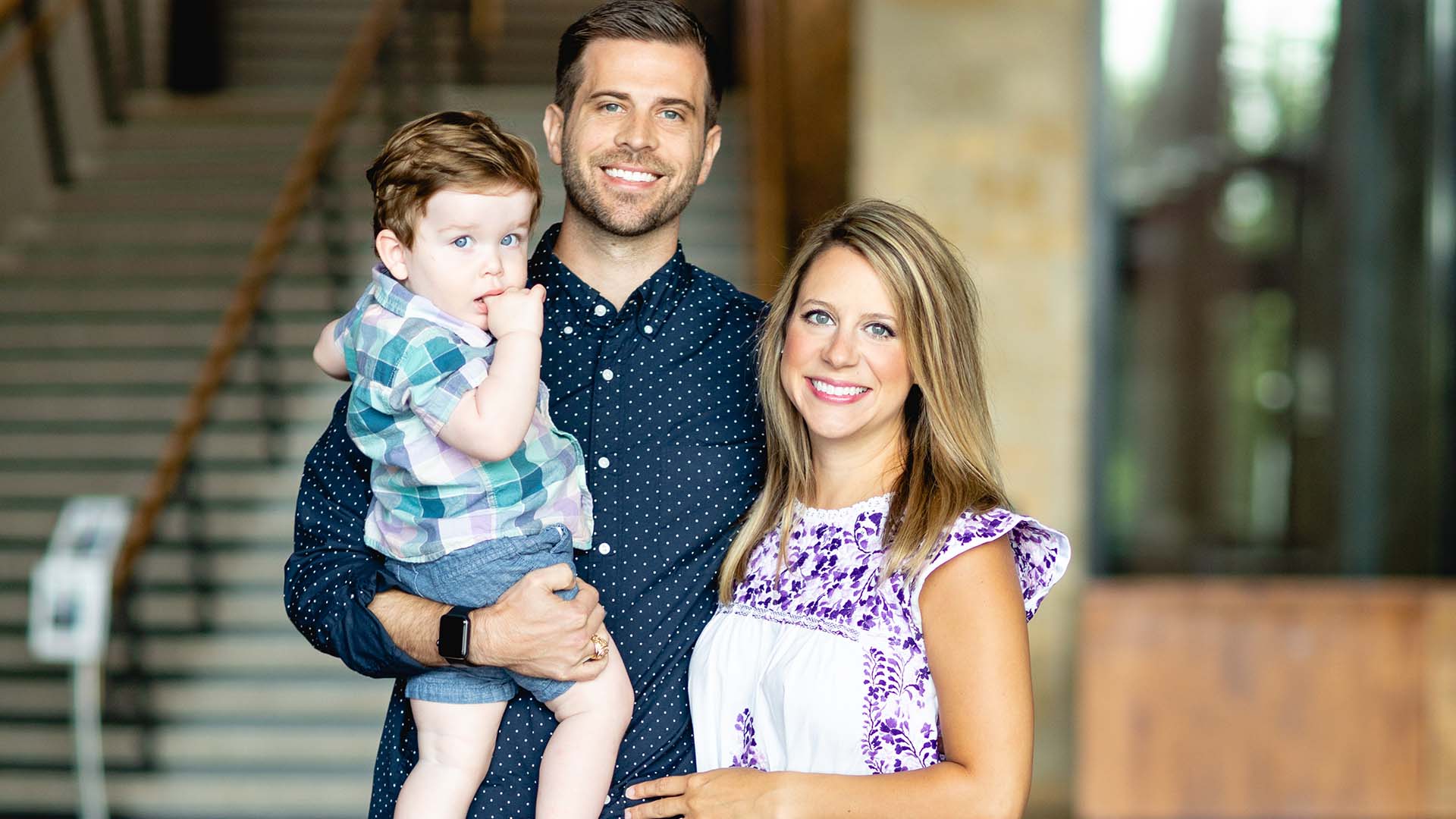Foster Care and Adoption
Caring for Vulnerable Children and Families
We prepare and support families giving of themselves through foster care and adoption.
Ministry Information
| location_on |
Dallas 7540 Lyndon B Johnson Fwy Dallas, TX 75251 |
| Email the Family Team | |
| Subscribe to our newsletter |
“A father to the fatherless and defender of widows is God in His holy dwelling. He sets the lonely in families…” Psalm 68:5-6
We resource foster and adoptive families to be among the healthiest families at Watermark, and we care for vulnerable children.
We seek to:
- Ensure foster and adoptive families thrive
- Provide guidance in parenting children with complex trauma
- Lead our members to understand their homes are a resource to give their family to a child or parent in need
- Share and exemplify the gospel of Jesus Christ to vulnerable children and their families and experience the support of a biblical community
We serve as a resource for those at Watermark who are interested in knowing more about God's heart for the fatherless and caring for them (Deuteronomy 10:18-19).
Recommended Resources in DFW
Need help? We have a list of resources available to families in the Dallas-Fort Worth metroplex.
Top Ten Must-Reads For Foster and Adoptive Parents
Here are ten books that can help you care for children in crisis.
Community Group Guide to Supporting Foster or Adoptive Families
An overview for how a community group can come alongside a family in their decision to foster or adopt.
Serve With Foster Care and Adoption
Recruitment and Licensing
Encouraging and equipping families to open their homes to foster and adopt
Embrace Texas
- Embrace hosts quarterly meetings to help those interested in becoming a foster or adoptive parent get answers to their questions in a casual environment. Embrace is not a child placing agency, but it can help you get connected.
Buckner
- Buckner is a child-placing agency that provides counseling, prevention, and family services as well as licensing for prospective foster and adoptive families.
CK Families Services
- CK Family Services is a child-placing agency providing treatment foster care, behavioral health, and post-adoption support as well as licensing for prospective foster and adoptive families.
Serve Adoptive Families and Children in Foster Care
Embrace Texas
- Provides life changing programs and resources to vulnerable children and their care givers. You can help children lingering in the foster system find love and stability. You can minister to foster parents through respite care, night outs, support groups, and valuable trainings. You’re supporting teens who “age out” of foster care without an adoptive family. Volunteer and make a difference today.
Foster care and adoption are both beautiful expressions of God making a way for children to be cared for, but they are different and should be entered into with discernment alongside biblical community.
- The purpose of foster care is to restore a child to their biological parents when possible (Leviticus 25:25).
- The purpose of adoption is to place a child whose family cannot care for them into a permanent, loving home they will belong in as they develop and grow (Psalm 68:5-6).
Below are some common questions and concerns. If you have other questions, please contact us.
Adoption FAQ
Families can adopt a number of ways, and each path has its own nuances. In general, there are four ways to adopt a child.
- Adoption from foster care – More than 100,000 children in the United States foster care systems whose parental rights have been terminated are available for adoption. All ages, races, and children of varying levels of need are available for adoption. You can adopt children from your State or another State. To learn more, visit AdoptUSKids.org or to learn about children from Texas, visit the Texas Adoption Resource Exchange.
- International adoption – Children in institutions and orphanages in other countries are also available for adoption. Due to government controls maintaining the integrity of the adoption process, not all countries are open to adopt, but there are reputable organizations that work with different countries to facilitate adoptions. Adopting parents should explore each country’s process and understand the variables and requirements concerning travel, costs, etc. For more information visit US Dept. of State’s webpage on Intercountry Adoption.
- Private adoption – Children can be placed into an adoptive family by a mother and father who feel they cannot parent their child. Sometimes this is due to an unplanned pregnancy or may even apply to a step-parent adopting a step-child. Most commonly, a mother will select an adoptive family through an adoption agency. To learn more about private adoption, visit Little Flower Adoption Services.
- Embryo adoption – Many couples experiencing infertility have created more embryos than they are willing to bring to term, and while we encourage couples participating in in vitro fertilization (IVF) to only create as many embryos as they are going to implant, there are millions of frozen embryos available for adoption that can be implanted and carried to term in a mother’s womb. For more information, visit Embryoadoption.org.
Adoption costs can range from nearly free (when adopting from the state foster care system) to upward of $40,000 (with private and international adoption). You should consider the cost as you decide what type of adoption is best for your family. Invite your community group into the decision, and consider seeking input from other families who have been through the adoption process.
Some families host adoption fundraisers such as silent auctions or garage sales. There are also a variety of interest-free loans available, and in some rare cases, adoption grants. The adoption tax credit can also help relieve the cost of adoption.
If you are a Watermark member, contact us about applying for a no-interest loan or grant to help with your adoption.
When faced with a list of agencies, choosing one can seem like a daunting task. Get involved with support groups and talk to AS MANY people who have adopted as you can. Most are happy to share their experiences with their agency with you. Start a running list of recommendations from people you talk to, and then give the agencies a call.
Good questions to ask an agency directly are:
- How long has the agency been in business?
- How many cases do each of your caseworkers oversee at any given time?
- What is the turnover rate of your casework staff?
- Do you have post-placement therapeutic services and resources available? If so, what are they?
- Does your training for adoption include trauma-informed care?
- Can I choose to only adopt a child of a certain race?
With the counsel of your community group, you will know what type of adoption, and ultimately, what age, gender, and degree of need a child has that would be best for your family. While it is not healthy or productive to dream of the perfect child bounding into your arms the first time your eyes meet, you should carefully consider who you are best equipped to parent.
Children of all ethnic backgrounds need loving homes, and your agency should be supportive of your choice when it comes to your child. Talk to parents in transracial families. Remember, they may not have your eyes, but they can have your heart!
While infertility may be what prompted a couple to consider adoption, the most biblical motivation for adoption or foster care is faithfulness to the biblical instruction to care for vulnerable children and their families (Deuteronomy 10:18-19, James 1:27). Couples need to process the loss they are experiencing from infertility independently from the decision to adopt in order to avoid unintentionally placing desires and dreams for a biological child on an adopted child. Remember that adoption will not relieve all of the grief from infertility.
It is also important to acknowledge God’s design for biological parents to raise their children whether a couple is planning to adopt or foster by maintaining the priorities of biological parenting, openness following an adoption, or family restoration when fostering. This ensures couples avoid a sense of entitlement to an adoptable or foster child. Children can and do attach to their adoptive or foster parents in many of the same ways children do to biological parents, and yet there is always a need to welcome differences and explore a child’s sense of identity as they grow.
Well-intentioned friends and family may suggest adoption or foster care as a solution to a couple’s infertility , but it is important to process through infertility regardless of whether a couple decides to adopt, foster, or choose to not have children at all. Before pursuing adoption or foster care, check out Shiloh, Watermark’s ministry to women and couples experiencing infertility, and talk with your Community Group.
Check out Shiloh, Watermark’s ministry to women and couples who are experiencing infertility and/or miscarriage.
Before an adoption is finalized, both parties come to an agreement about the degree of “openness” of the adoption. This term describes the amount of contact a child will have with their birth family.
Some families agree to send a yearly update with pictures to birthparents, or even allow visits. Some families have regular contact with birthparents, biological siblings, or grandparents. Developing a level of appropriate openness is beneficial for adopted children, as they will feel a sense of abandonment and responsibility for that abandonment.
Openness can also help adoptees understand their identity as they mature into independence, encouraging them to embrace their adoption. We never want to hide a child’s past, although our conversations should remain age-appropriate.
Foster Care FAQ
Remember that foster children have been placed in your home temporarily for protection, care, and nurturing. While some children may become adoptable, family reunification is always the primary goal of the courts and the biblical precedent in Scripture (Lev. 25:25-41).
It can be very painful to send a child into a situation you know little about, especially after they have been a part of your family for some time. We want to ensure from the point you accept a child into your home you are intentionally reaching out to their parents to build them up in their efforts to complete their court-ordered service plans and restore their family. Ask them how they like their child’s hair done for visits or what foods or activities their child enjoys. These efforts to establish a relationship and build rapport undermine an "us vs. them" mentality.
When reunifying, know you have seen this child through their darkest hours and made a lasting impression on their lives. We encourage families experiencing this loss to press into their community group and lean on those who know and love them well. Take time to process the experience in your group, but don't allow the loss to permanently paralyze you from giving your family to a child in need in the future.
“Mom” or “Miss” or “Sir” or “Hey You!” Depending on the age of the children, you should introduce yourself with what you want them to call you. Miss (first name) and Mr. (first name), are common and respectful options.
If you have children in the home calling you Mom and Dad, your foster children may quickly begin to call you this as well. This is not an issue, as long as you are always clear about who their biological parents are. Children may also begin to refer to their birthparents as “my old mom” or “my other dad.” In these situations it is best to take a moment to clear things up.
In some cases you may see birthparents on a regular basis when dropping a child off for their court-allowed parental visits. Some children do not have visits, and some parents cannot be visited (if incarcerated, for example).
Meeting a child’s biological parents for the first time can be nerve-racking. Stick to the basics. Greet them and introduce yourself as the child’s foster parent. If they have questions about the child, or the care you are giving them, answer any you feel comfortable with. Or ask them to write them down, and you will send an update through the caseworker.
While the choices of the birthparents are the most likely reason a child is in foster care, they are not the enemy. Your attempts to encourage them or find out what their child likes or dislikes while in your care can only improve the long-term success of a child’s healing and growth.
Every child in the care of CPS receives some form of Medicaid (medical insurance) at no cost to foster parents. This covers all medical, dental, and vision costs with approved providers. There are no co-pays, and almost all hospitals and emergency rooms accept Medicaid.
If your foster child is under three years old, Early Childhood Intervention (ECI) will assess their developmental needs and provide speech or occupational therapy, if appropriate. Otherwise, your public school district will assess any special services your child will need.
Foster parents can contact their child placing agency for references regarding counselors to help children work through neglect, abuse, and loss. These counselors are covered by Medicaid as well.
Many families who foster and adopt already have other children in the home, and it is necessary to think about the impact foster care and adoption will have on them. While you have expectations of what a new child will be like in your home, your children have expectations, too. Will they like me? Will I get to show them new things? Will they share? Where will they sleep? What will it be like if/when they leave? What if they aren’t nice?
Parents must give their kids voice into this decision and throughout the process.
Many biological children come to mature and develop a greater compassion for other people because their parents chose to foster. So, keep the conversation open and ongoing about how they are feeling and prepare them for the journey your whole family is going on.
Yes, but it is not the final factor in who you can or cannot foster parent. There will be times when foster and biological children of the same age will blend well together in a home, and there will be times when caring for an infant or child younger than your biological children will go smoothly.
Be perceptive about the emotional health and maturity of your children. If you have a difficult time caring for a child that is roughly the same age as a biological child, adjust your age range for the next foster placement that comes to your home or take a break for a while after that child is reunified with their family.
A foster child will go to the school in your school district and can ride the bus like any other child. If your school district offers Head Start, a pre-school program for at-risk children ages 4 or 5, your foster child should be enrolled there. Foster children qualify for free breakfast and lunch as well.
The state does not permit foster children to be homeschooled. Due to the neglect and inconsistency of the parenting, many foster children received early in life, a child may require extra help in developing the skills they need to succeed. However, the priority for foster parents should be fostering a sense of security in a child’s heart.
A group consisting of the child’s CPS caseworker, a CPS supervisor, a court-appointed special advocate (CASA), the district attorney, and the child’s attorney ad litem determine the child’s permanency plan with a judge’s ongoing approval. Birthparents traditionally have one year to complete a service plan and be reunified with their children.
If this group diligently pursues reunification and reunification is no longer appropriate, the court will change the goal to adoption (usually no earlier than 9 months into a foster care placement). At that time, other family members have 90 days to be considered, and if no appropriate family steps forward, the foster family can adopt.
The adoption process is usually finalized after a few more months and depending on circumstances can cost anywhere from $0 to $1,500.



